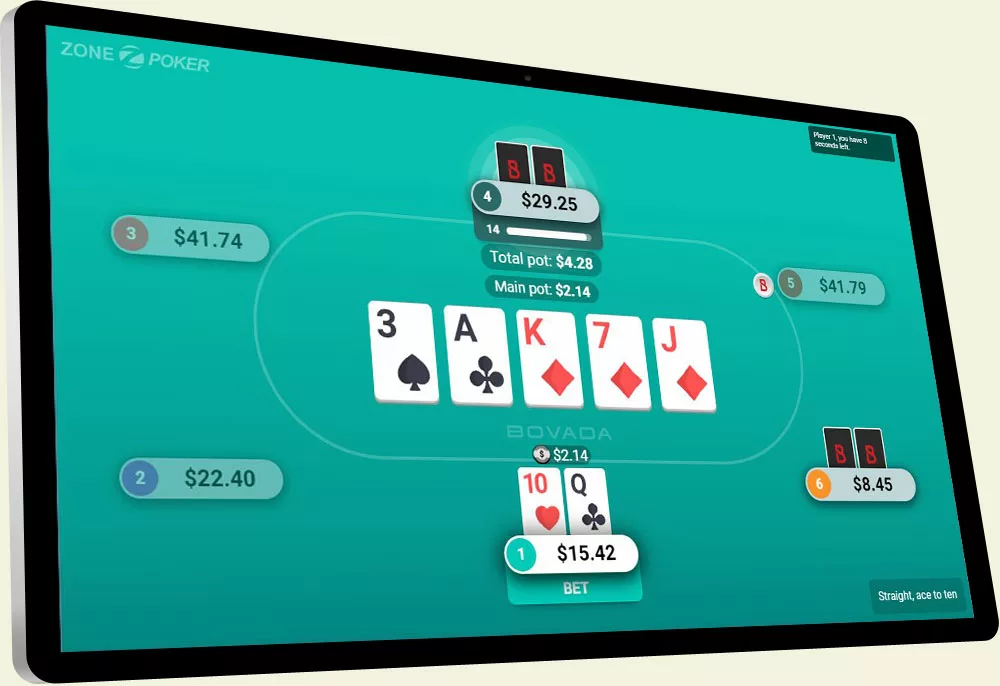Easy Rules of Texas Hold’em

Texas Hold’em and especially no-limit Hold’em (NLHE) is the most commonly played poker game in live card rooms and casinos around the world.
In this article, I’d like to teach you how to play Hold’em poker as well as discuss some beginner strategies for playing solid poker.
It’s not very difficult to explain the Texas hold’em poker rules to someone that is unfamiliar with poker. The following is a simple explanation of the rules and beginner strategies for Texas Hold’em poker.
Texas Hold’em Betting Variations
There are three different betting variations in Texas Hold’em:
- Fixed-Limit
- Pot- Limit
- No-Limit
They all follow the same basic rules, but the betting structures dictate the minimum and maximum bets and raises that can be made during each round of betting.
Fixed-Limit
In fixed-limit, the bet size is predetermined based on the size of the blinds. You can only bet or raise a fixed amount of chips.
For example, in a $2/$4 fixed-limit game the minimum bet is equal to the big blind which is $2 for the first two rounds of betting (pre-flop and flop) and then the minimum bet is doubled is for the last two rounds of betting (turn and river.)
All bets and raises must be the same fixed amount.
Capped number of raises
Also, in fixed-limit Hold’em games most casinos and online poker rooms cap the number of raises that can be made during any betting round. It’s usually capped at 3 raises.
That means that if one player bets $2, the next player raises by $2 to $4, a third player raises another $2 to $6, and a fourth player puts in a raise to make it $8 total, the betting is said to be capped, and no further raises are allowed at that point.
No-Limit
No-limit overtook fixed-limit as the dominant Hold’em betting variation in the mid-2000’s as online poker blew up the game.
Just as it sounds there are no limits to what a player can bet at any time, up to their entire chip stack. This applies to cash games and tournaments.
The now-ubiquitous “all-in” phrase originates with no-limit as you are “all-in” when you’ve bet your entire chip stack.

Pot-Limit
By definition, pot-limit allows the bettor to decide on any bet amount up to the size of the pot.
Pot-limit can be an enjoyable variation for a change of pace, but isn’t found very often in live cardrooms or online. You’ll usually see an event or two of it on the WSOP schedule.
Basic Rules of Texas Hold’em
The Blinds
Before the game begins, two players are required to post what is the big blind and small blind. These are forced bets to start building a pot before the flop. Table stakes are defined the by the size of these blinds.
For example, in a $1/$2 no-limit hold’em game, the small blind is $1 and the big blind is $2. The small blind is usually equal to half of the big blind. The blinds get passed around the table at the beginning of each hand in a clockwise direction one player at a time.
The Dealer
The dealer (in the case of online poker the computer) will start dealing cards starting with the person to his left and dealing in a clockwise motion until everyone has a card.
The dealer will then deal out another card to everyone so that every player now has two hole cards in his or her hand, which are used to make the best five-card poker hand.
That is, as per the standard poker hand rankings, a royal flush beats a straight flush, which beats a flush, which in turn beats a straight, and so on.

Texas Hold’em betting rounds
After you have your first two hole cards, you have the first round of betting. The first person to the very left of the player who posted the big blind will go first on this pre-flop betting round. The player in the big blind will get to act last.
Players have the option to raise, call the amount of the big blind, or fold.
If the pot has been raised, you can either call, raise it more or fold. If you are in the big blind position when it’s an unraised pot, you also have the option to check, as you’ve already invested the minimum bet in the pot.
The Flop
After everyone has acted in the pre-flop round of betting, three cards are dealt face up in the middle of the table that every player will share to make the best hand. This is called the “flop” and then comes another round of betting.
The person who posted the small blind will be the first person to act on this round or whoever is still in the hand that is to the left of the button. You now have the option to check or bet, when no one else has bet or raise up the pot.
If someone has already bet or raised the pot before the actions gets to you, then you can call that amount, muck, or raise it more.
The Turn
After the betting on the flop has been completed, another community card is dealt face up for all the active players in the hand to use. This is called the “turn” or fourth street.
Another round of betting occurs. You have the same options as you did on the flop. That is to bet, check, or call in unraised pots. Call, fold, or raise when someone has already bet or raised before you have acted.
The River
Now comes the final community card, known as the “river”. The dealer will again deal out one card face up in the center of the table that again everyone will share to make up the winning hand and the final round of betting takes place. Players have the same options that you had for the flop and turn.
You can bet it or check it when no one else has bet before it’s your turn to act. If someone else has already made a bet, if you don’t wish to continue you have to muck your cards, otherwise you can call, or make it more by raising the pot.

The Showdown
After the river betting has been completed, one person wins the pot if every other player folds or you will showdown your hands if all bets and raises on the river are called to determine which player has the best hand.
If two or more players share the exact same hand then it’s a split pot. The majority of hands (75%) don’t ever see a showdown.
Texas Hold’em Strategy
You’re probably familiar with the saying “the game of Texas Hold’em takes only minutes to learn, but a lifetime to master.”
Although the basic rules are fairly easy to grasp so that you can literally be playing in a few minutes with no prior knowledge of the game, when you really study and play more of the game, over time it becomes obvious just how complex the game really is.
It is an ever evolving game and in order to stay ahead of the competition you need to be constantly fine tuning your game to make sure you’re exploiting opponents and not playing in an exploitative way yourself.
A style that was successful in the 1990s isn’t successful anymore and likewise what is profitable right now will be dated in a decade from now.
View my extensive poker strategy section for dozens of detailed articles on how to win at Hold’em.
Rules of Texas Hold’em stay the same; the strategy changes
Back then, it was almost unheard of to see players 3-betting with anything but premium hands (such as AA, KK or perhaps AK pretty much always.)
But as shorthanded 6-max no-limit hold’em games became more popular online, it is now uncommon not to see a table where players are not three betting with a fairly high frequency.
Aggression is key to playing winning Texas hold’em poker
Not only pre-flop but post flop as well. As alluded to above, most hands don’t see a showdown. That means the majority of the time the winner is determined by the decisions made during the hand and not the cards, because players aren’t showing their cards when their bets aren’t called.

Hence, the reason that aggression is so important, especially in no-limit Hold’em since players have the opportunity to make big bets and force their opponents to make decisions for their entire stack.
Adopting this style of play is such a powerful weapon in poker because players are going to be unwilling to commit large portions of their stacks without big hands, which they’re not going to have very often. Because of this, it allows you to win a lot of uncontested pots without showing down any hands.
Position is also essential
Another important concept to understand in the game of Texas Hold’em is position. It is a very important part of the game. Each position at the poker table is relative to the dealer’s button, which is always the last person to act after the flop.
Playing position well is such a big part of the game because acting last after the flop is such an advantage. It allows you to extract more value with your strong hands and not pay off your opponents when you have the second best hand.
Due to having position, you can play a lot more hands in the late position at the table. If the other players involved in the hand have shown weakness by checking it around to you on the flop, this tends to suggest they likely don’t have a very good hand, and there will be many opportunities to steal the pot when you have nothing.
You don’t have this type of information when you’re out of position and have to act first.






